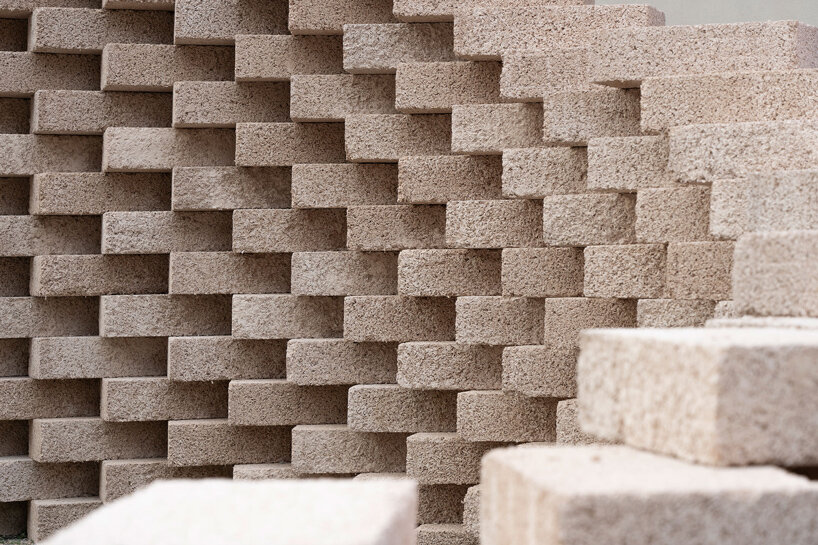In an era where the construction industry devours resources like a ravenous giant—gobbling up 40% of global energy and spewing out nearly 40% of carbon dioxide emissions—innovators are turning to an unlikely hero: the humble hemp plant. Imagine a material born from a seed that sprouts in mere months, sequesters carbon like a forest on steroids, and molds into walls that breathe, insulate, and endure. This is hempcrete, a bio-composite that’s not just filling gaps in timber frames but challenging the concrete throne in green architecture. From ancient whispers in Gaulish huts to modern eco-mansions in Morocco, hempcrete’s journey is a testament to nature’s blueprint for building sustainably. As climate clocks tick louder, this plant-powered powerhouse is rising, promising structures that heal the planet rather than harm it.
Sprouting Roots: Hemp’s Ancient Whisper in Modern Soil
Hemp’s story in construction isn’t a flash in the pan; it’s a revival of forgotten wisdom. Archaeological digs reveal that pre-Christian Gauls mixed hemp fibers with lime to fortify timber homes against the damp European chill, creating breathable walls that warded off rot. Fast-forward to the 1980s in France, where eco-pioneers rediscovered this alchemy to retrofit medieval frames, dubbing it “hempcrete” for its concrete-like moldability minus the ecological baggage. Today, industrial hemp—Cannabis sativa’s non-psychoactive cousin—grows voraciously, reaching maturity in 100-120 days on soil too poor for food crops, demanding 50% less water than cotton and zero pesticides if rotated smartly.
The plant’s secret weapon? Its stalk splits into hurds (the woody core, 70% of the biomass) and bast fibers (the tough outer sheath). While fibers spin ropes or insulate, hurds—once discarded as waste in places like Morocco, the world’s top hemp producer—become hempcrete’s star. Morocco alone burns or buries 200,000 tons of hurds yearly, a biomass bonanza that’s 80% cellulose, ripe for revolutionizing building. Legally, hemp’s stigma lingers, but shifts like the U.S. Farm Bill of 2018 and Europe’s expanding quotas are unleashing fields from Kentucky to the Loire Valley. One hectare yields 8-10 tons of hurds, enough for 200 cubic meters of hempcrete—framing walls for a modest home. This rapid rebirth isn’t just agricultural; it’s architectural insurgency, turning “weed” into wealth for green builders.
Alchemy in the Mix: Crafting Hempcrete from Scratch
Picture a giant, earthy smoothie: hemp hurds (the aggregate), lime binder (the glue), water (the elixir), and sometimes a dash of cement for kick. The recipe’s elegance lies in simplicity—mix 1 part lime to 2 parts hurds by mass, add water to a peanut-butter consistency, and voila: a lightweight slurry (density around 300-400 kg/m³, half of concrete’s heft) ready to pour into forms. No high-heat kilns here; lime, derived from abundant limestone, cures at ambient temperatures, slashing energy use by 90% compared to Portland cement’s fiery forges.
Production’s magic unfolds in phases. Hemp harvests in fall, stalks retted (soaked to separate fibers), then shattered to free hurds—porous nuggets that trap air for insulation. Hydrated lime slakes into a putty, binding the mix via carbonation: as it dries, hempcrete inhales CO₂, hardening like a photosynthetic exhale. A single cubic meter absorbs 100-200 kg of CO₂ during curing, outpacing emissions from transport and mixing. Prefab options, like Hempitecture’s blocks, speed site work; cast in molds, they snap together like Lego for non-load-bearing infills in timber or steel frames. Challenges? It demands skilled labor—mixing’s an art, curing takes weeks—and initial costs hover 20-30% above conventional walls. Yet, with hemp’s yield booming (global production hit 1.5 million tons in 2023), economies scale, and innovations like bio-lime variants cut drying to days. This isn’t factory drudgery; it’s farm-to-form alchemy, where every batch buries carbon deep.
Fortress of Breath: Hempcrete’s Superpowers Unveiled
Hempcrete isn’t just green; it’s a building’s best friend, whispering resilience where concrete bellows brute force. Thermally, it’s a champ: with conductivity as low as 0.07 W/m·K, a 300mm wall delivers R-17 insulation—rivaling fiberglass without the itch or off-gassing. In a U.S. retrofit study, hempcrete walls halved heating bills, maintaining 20-22°C indoors amid -5°C chills, thanks to vapor permeability that lets moisture dance without mold’s uninvited waltz. Fire? Lime’s alchemy turns it into a shield; blocks withstand 120 minutes at 1000°C, charring gracefully without toxic smoke—ideal for escapes, not infernos.
Acoustically, those air pockets muffle noise like a natural baffle, absorbing 40-50 dB in mid-frequencies, perfect for urban dens. Durability shines in seismic zones; its flexibility (compressive strength 0.5-3 MPa, but elasticity prevents cracks) sways with quakes, as seen in French trials. Pest-proof and antifungal, hemp’s natural alkaloids deter termites and mildew, extending lifespans to 100+ years. Unlike concrete’s rigid tyranny, hempcrete “breathes,” regulating humidity at 50-60% RH, curbing allergies and asthma— a boon for the 300 million global sufferers. Figures don’t lie: lifecycle analyses peg its embodied energy at 20-30% of concrete’s, with zero VOC emissions for healthier homes. It’s not structural steel, but as infill, it fortifies frames, turning vulnerabilities into virtues. In green architecture, hempcrete isn’t a patch; it’s the pulse.
Carbon’s Quiet Coup: Hempcrete’s Eco-Triumph Over Titans
Concrete’s crown weighs heavy: 4 billion tons produced yearly spew 8% of global CO₂, plus 1.7% of freshwater withdrawals. Enter hempcrete, the carbon coup d’état. Hemp fields sequester 10-15 tons CO₂ per hectare during growth—more than forests—while the mix’s carbonation locks away another 50-100 kg/m³. Net result? For a 100-year wall lifespan, emissions drop 16-36 kg CO₂/m² versus clay bricks or polystyrene-insulated composites, per Moroccan LCA studies. Scaling up, Morocco’s untapped hurds could slash national emissions by 1.9 million tons yearly—2.8% of totals—via hempcrete homes.
Biodiversity blooms too: hemp’s rotation enriches soil, cutting erosion 70% and needing no GMOs. Waste? Biodegradable to the core, hempcrete crumbles into compost or recycles into new mixes, dodging landfills unlike concrete’s eternal sprawl. Energy-wise, its insulation trims operational demands 30-50%, offsetting the sector’s 37% emissions share (UNEP 2022). Social ripples: hemp farming creates jobs—up to 10 per 100 hectares—boosting rural economies in places like India, where Prem Jain’s prototypes herald “hemp villages.” Challenges persist—lime’s quarrying isn’t zero-impact—but bio-binders and local sourcing minimize footprints. Hempcrete doesn’t just build; it rebuilds the balance, turning skyscrapers into carbon sinks.
Pillars of Proof: Hempcrete’s Global Landmarks
Theory meets trowel in real-world wonders. The Push House in Asheville, North Carolina—America’s hempcrete pioneer since 2010—spans 3,400 square feet, blending modern lines with walls that cut energy use 40%. Its family owners rave about summer cools without AC, a testament to R-20 performance. Across the Atlantic, Suffolk’s Haverhill homes, standing two decades strong, showcase breathable walls that halved damp issues in Britain’s soggy clime.
France’s Pierre Chevet sports center near Paris, completed recently, poured 500 cubic meters of hempcrete for arenas that echo less and insulate more, earning LEED whispers. In Morocco, Marrakech pilots compare hempcrete villas to brick counterparts, logging 25% lower embodied carbon and cozy interiors sans extra HVAC. England’s Adnams Brewery warehouse, a 5,000 m² behemoth on reclaimed gravel, leverages hempcrete for 30% heating savings, proving industrial scale. Even upstate New York’s Wally Farms cottages, prefab-blocked last summer, rent as eco-retreats, drawing Columbia University eyes for Hudson Valley green initiatives. These aren’t anomalies; they’re blueprints, with Hempitecture’s U.S. projects in Texas and Hawaii scaling to commercial hubs. Each stands as proof: from seed-sown fields to skyline sentinels, hempcrete erects not just buildings, but beacons.
Horizons of Hemp: Scaling to the Stars
As 2050 net-zero deadlines loom, hempcrete’s ascent accelerates. Projections eye a $10 billion market by 2030, fueled by codes mandating low-carbon materials in the EU and U.S. Innovations beckon: 3D-printed hempcrete for curved facades, nano-lime for faster cures, even hybrid blocks blending with mycelium for fungal fortitude. Challenges—standardization, supply chains, stigma—fade against tailwinds like subsidies for bio-materials. In India, GoHemp’s prototypes could greenlight hemp economies, employing millions. Globally, if 10% of new builds swap concrete for hempcrete, we’d sequester 500 million tons CO₂ annually—a skyscraper-sized salve.
From a seed’s defiant sprout to urban spires that sigh with relief, hempcrete reimagines architecture as ally, not adversary. It’s not utopia overnight, but a verdant vanguard, urging us: build not higher, but holier. In this rise, we don’t just construct; we cultivate hope—one block at a time.
Revolutionize green architecture with NanoHempTechlabs‘ wholesale hempcrete—from seed to skyscraper! Our premium hemp blocks, powered by industrial hemp, sequester 10-15 tons CO₂ per hectare, deliver R-17 insulation, and resist fire for 120 minutes at 1000°C. Lightweight (300-400 kg/m³) and breathable, they slash energy use by 40%, deter pests, and lock away 100-200 kg CO₂ per cubic meter—far greener than concrete’s 8% global emissions share.
Crafted with nano-lime for rapid curing, our prefab blocks suit eco-mansions to seismic-safe hubs, as in Asheville’s Push House or England’s Adnams Brewery. Boost biodiversity, cut costs 20-30%, and scale effortlessly—one hectare yields 200m³ of walls.
Wholesale partners: Unlock bulk deals and custom mixes. Schedule a call today to build sustainably!
Reference:
- Arrigoni, A., Pelosato, R., Melià, P., Ruggieri, G., Sabbadini, S., & Dotelli, G. (2017). Life cycle assessment of natural building materials: the role of carbonation, mixture components and transport in the environmental impacts of hempcrete blocks. Journal of Cleaner Production, 149, 1051-1061. https://doi.org/10.1016/j.jclepro.2017.02.161
- Bennai, F., Hachem, C., Abahri, K., & Belarbi, R. (2019). Influence of hydric solicitations on the morphological behavior of hemp concrete. Rilem Technical Letters, 4, 16-21. https://doi.org/10.21809/rilemtechlett.2019.80
- Campiglia, E., Gobbi, L., Marucci, A., Rapa, M., Ruggieri, R., & Vinci, G. (2020). Hemp seed production: environmental impacts of cannabis sativa l. agronomic practices by life cycle assessment (lca) and carbon footprint methodologies. Sustainability, 12(16), 6570. https://doi.org/10.3390/su12166570





